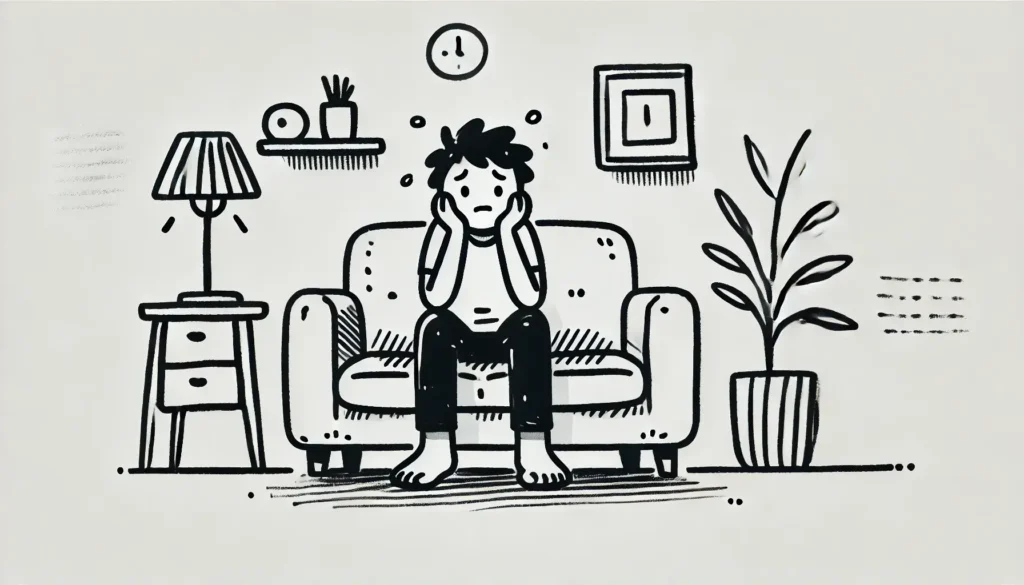Table of Contents
I. Introduction
Ever feel like your brain’s browser has too many tabs open?
You’re not alone—and it’s not just a feeling. Between constant notifications, multitasking, and the flood of information we encounter daily, our minds are under constant strain. This mental exhaustion is more than just stress or poor time management—it’s a symptom of something deeper.
Enter Cognitive Load Theory (CLT)—a powerful framework from educational psychology that explains why your brain feels overwhelmed and how you can regain focus and clarity.
In this blog, we’ll break down what Cognitive Load Theory is, why it’s more relevant than ever in the modern world, and give you 7 science-backed, practical strategies to manage your mental load and think more clearly.
II. What Is Cognitive Load Theory?
Definition & Origins
Cognitive Load Theory (CLT) was developed by Australian educational psychologist John Sweller in the late 1980s. Originally focused on improving instructional design, the theory has since become a foundational concept in psychology, neuroscience, and workplace productivity.
At its core, CLT centers on how humans process new information—and the limitations of working memory. Working memory is the short-term mental “notepad” we use to store and manipulate information while solving problems, learning new things, or making decisions.
But here’s the catch: working memory is extremely limited. When the demands placed on it exceed its capacity, we experience cognitive overload. That’s when your thinking gets fuzzy, focus slips away, and learning stalls.
Core Principle
Think of your brain like a whiteboard. It can only hold a few items at a time. When you try to cram too much onto it—say, checking emails, watching a tutorial, and juggling a conversation—everything gets jumbled. Nothing sticks.
Cognitive Load Theory explains this bottleneck and helps identify what’s actually clogging up your mental space.
A. The Three Types of Cognitive Load
To understand why your brain feels so overloaded, we need to look at the three types of cognitive load defined by Sweller. Not all mental effort is equal—some of it helps you learn and function better, while other types just slow you down.
1. Intrinsic Load
This is the natural difficulty of a task or topic. Solving a math equation, learning a new language, or writing an essay all carry intrinsic cognitive load. It depends on how complex the material is and how much you already know about it.
For example: If you’re new to coding, even basic HTML can feel overwhelming—but for a seasoned developer, it’s second nature.
2. Extraneous Load
This is the unnecessary effort caused by how information is presented—or by distractions that make comprehension harder. Poor instructions, noisy environments, cluttered interfaces, or irrelevant data all increase extraneous load.
Think of it like trying to read a map while someone is shouting random directions in your ear.
3. Germane Load
This is the productive mental effort you use to make sense of new information and build connections in your long-term memory. Germane load is the good kind—it leads to understanding, retention, and learning.
Chunking, analogies, and visual aids help optimize this kind of load.
Together, these three types of cognitive load determine how mentally manageable or overwhelming a task will feel. And when intrinsic and extraneous loads pile up without enough mental bandwidth to process them, you hit cognitive overload.

III. Why Does Your Brain Get Overwhelmed?
Modern Life = A Cognitive Pressure Cooker
Cognitive overload isn’t just a side effect of being “busy”—it’s baked into the fabric of modern life. We’re constantly bombarded with demands on our attention, often more than our brains were ever designed to handle. The result? Mental fatigue, reduced performance, and a pervasive sense of burnout.
Here are the key culprits turning your brain into scrambled eggs:
1. Multitasking & Task-Switching
Despite what productivity culture might tell you, multitasking is a myth. What you’re really doing is rapid task-switching, and it’s exhausting. Every time you shift your focus, your brain has to reorient—consuming precious cognitive resources.
Research shows that switching between tasks can reduce productivity by up to 40% and increase mental fatigue dramatically.[4]
2. Endless Information Streams
We take in more information in a day than people used to process in a week. Emails, articles, podcasts, videos, social feeds—it never stops. This information overload stretches your working memory thin and leaves little room for reflection or deep thinking.
3. Notifications & Noise
Constant pings from your phone or Slack may seem harmless, but each one breaks your concentration. Even minor distractions introduce extraneous cognitive load, diverting your attention and making simple tasks feel overwhelming.
Fun fact: It takes the brain an average of 23 minutes to fully refocus after an interruption.
4. Poor Structure & Clutter
When information is disorganized—whether it’s a messy desk, a cluttered digital workspace, or a confusing to-do list—your brain has to work harder just to find and process what matters. That’s a recipe for burnout.
Symptoms of Cognitive Overload
When the load exceeds your mental bandwidth, it shows up as:
- Brain fog or trouble concentrating
- Forgetfulness and careless mistakes
- Decision fatigue and overthinking
- Irritability or a short attention span
- Burnout, exhaustion, and disengagement
If any of these feel familiar, don’t worry—you’re not broken. Your brain’s just overworked. The good news? You can offload the pressure with smart strategies.
IV. 7 Actionable Ways to Regain Mental Clarity
You can’t expand your brain’s RAM, but you can reduce the load.
Here are seven science-backed strategies to free up mental space and regain clarity:
1. Prioritize and Simplify
Start by asking: What actually matters today?
Break complex tasks into bite-sized steps and tackle the most important ones first. Use tools like the Eisenhower Matrix or the 2-minute rule to cut the noise and focus your effort.
Simplicity isn’t laziness—it’s cognitive efficiency.
2. Limit Multitasking
Multitasking fragments your attention and wears down your working memory. Instead, practice single-tasking: focus on one thing at a time, and do it well.
Try time-blocking or techniques like Pomodoro (25 minutes of focused work + 5-minute breaks) to stay on task.
3. Take Regular Breaks
Short, intentional breaks allow your brain to reset. Walk outside, stretch, breathe deeply—anything that shifts you out of cognitive strain.
Aim for a break every 60–90 minutes to recharge your focus and reduce mental fatigue.
4. Organize Your Space and Information
Your environment influences your cognition. A clean, orderly space reduces distraction and saves decision-making energy.
Declutter your physical workspace and organize your digital life:
- Archive unused apps
- Create a logical folder system
- Use external tools (notebooks, apps, whiteboards) to offload memory
5. Use Visual Aids and Chunking
Visual structure lightens the load. Break up long passages, use bullet points, diagrams, or mind maps to enhance understanding.
Chunk related ideas together to help your brain store and retrieve them more easily. This taps into germane load, helping you learn more effectively.
6. Practice Mindfulness and Relaxation
Stress amplifies cognitive load. Practices like meditation, intentional breathing, or even 5 minutes of silence can calm your nervous system and clear mental clutter.
Not into meditation? Try mindful walking, progressive muscle relaxation, or slow journaling—anything that engages the present moment.
7. Set Boundaries and Reduce Unnecessary Input
Your attention is a limited resource. Protect it by:
- Turning off non-essential notifications
- Scheduling focus hours with zero interruptions
- Saying “no” to low-value commitments
Remember: Every yes to distraction is a no to clarity.
V. Bringing It All Together
Here’s the truth: feeling overwhelmed doesn’t mean you’re failing—it means you’re human. Cognitive overload isn’t a personal weakness; it’s a byproduct of living in a world that constantly demands more mental energy than your brain was designed to handle.
The good news? You’re not powerless.
By understanding Cognitive Load Theory and applying even a few of the strategies above, you can start to reclaim control over your focus, clarity, and peace of mind.
Start small.
Turn off a few notifications. Clean your desk. Take a mindful 5-minute break.
These tiny shifts aren’t just hacks—they’re acts of self-care for your brain.
VI. Further Reading & Sources
- Cognitive Load Theory and its application in the classroom
- What is Cognitive Overload? Causes, Effects, And Solutions
- Managing Cognitive Load for Better Mental Health
- How to Manage Cognitive Load and Optimize Your Thinking
- Cognitive Load Theory: A Teacher’s Guide
- Before You Burn Out: Dealing With Cognitive Overload at Work
- Why Your Brain Feels Overloaded (And How to Fix It)
- The Importance of Cognitive Load Theory
- How to Reduce Cognitive Load
- Tips to Improve Concentration – Harvard Health
- Mental Load: What It Is and How to Manage It – UCLA Health
- An Introduction to Cognitive Load Theory – The Education Hub
- BBC: Explaining Our Fight for Focus
VII. FAQ
1. What is working memory?
Working memory is your brain’s short-term processing system. It’s like a mental “scratchpad” where you temporarily hold and manipulate information. It’s powerful—but very limited in capacity.
2. Can cognitive overload cause burnout?
Yes. Prolonged cognitive overload can lead to mental fatigue, chronic stress, and eventually burnout. It’s one of the most overlooked contributors to modern exhaustion.
3. What are signs I’m cognitively overloaded?
Common signs include difficulty concentrating, forgetfulness, trouble making decisions, irritability, and that feeling of having “too many tabs open.”
4. Is multitasking always bad?
Multitasking with simple, automatic tasks (like folding laundry while listening to music) is usually fine. But trying to juggle multiple mentally demanding tasks leads to inefficiency and more mistakes.
5. How long should my breaks be?
Aim for short breaks every 60–90 minutes of focused work. Even 5–10 minutes of stepping away, stretching, or breathing deeply can make a huge difference.
Read: 7 Key Facts About Depression: Symptoms, Causes, and How to Overcome It
Similar posts….!
Rewire Your Brain for Positivity: 10 Steps to Overcome Negative Thinking






[…] Read More: Cognitive Load Theory: Why Your Brain is Overwhelmed and 7 Ways to Regain Mental Clarity […]
[…] Cognitive Load Theory: Why Your Brain is Overwhelmed and 7 Ways to Regain Mental Clarity […]